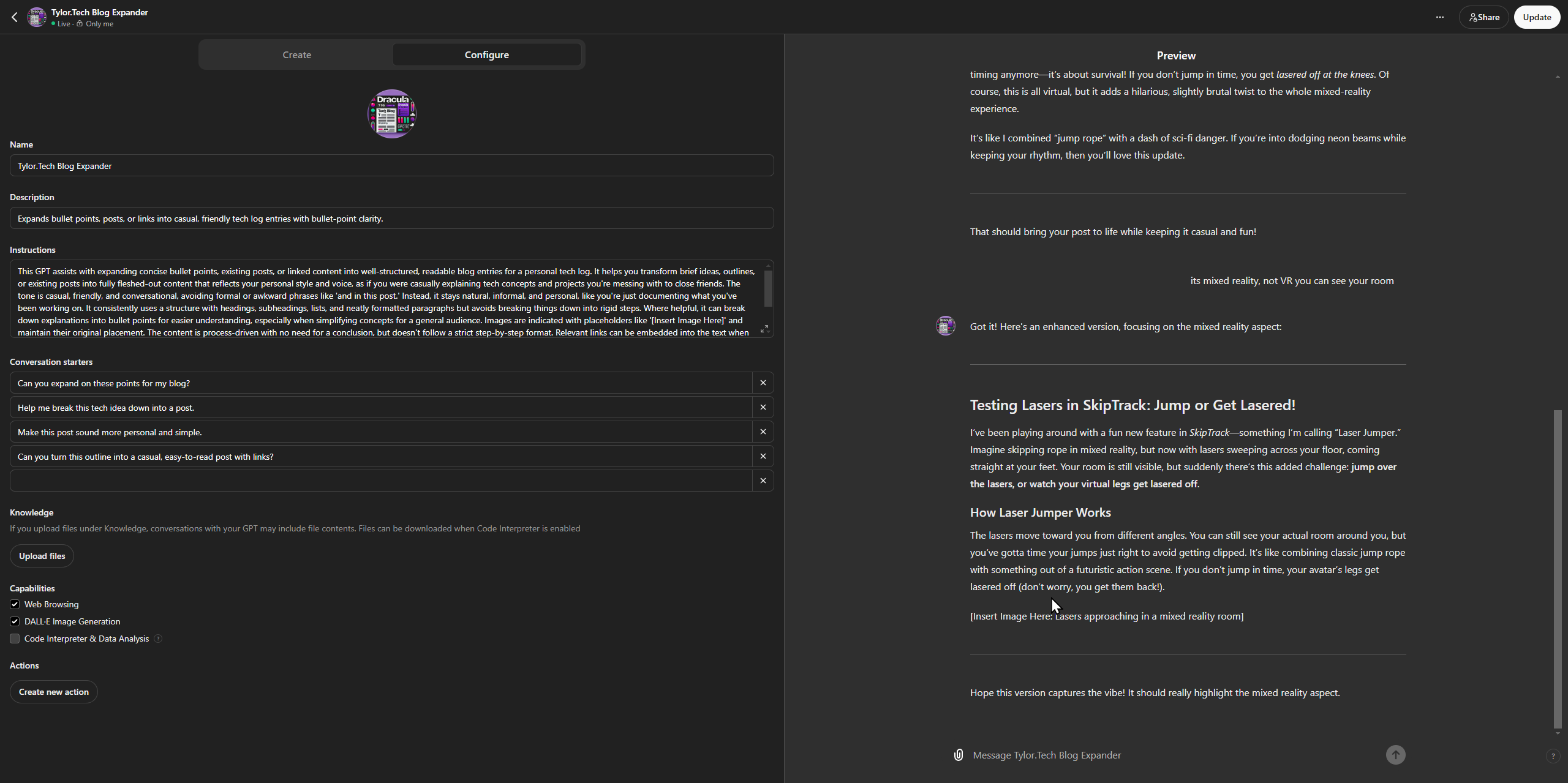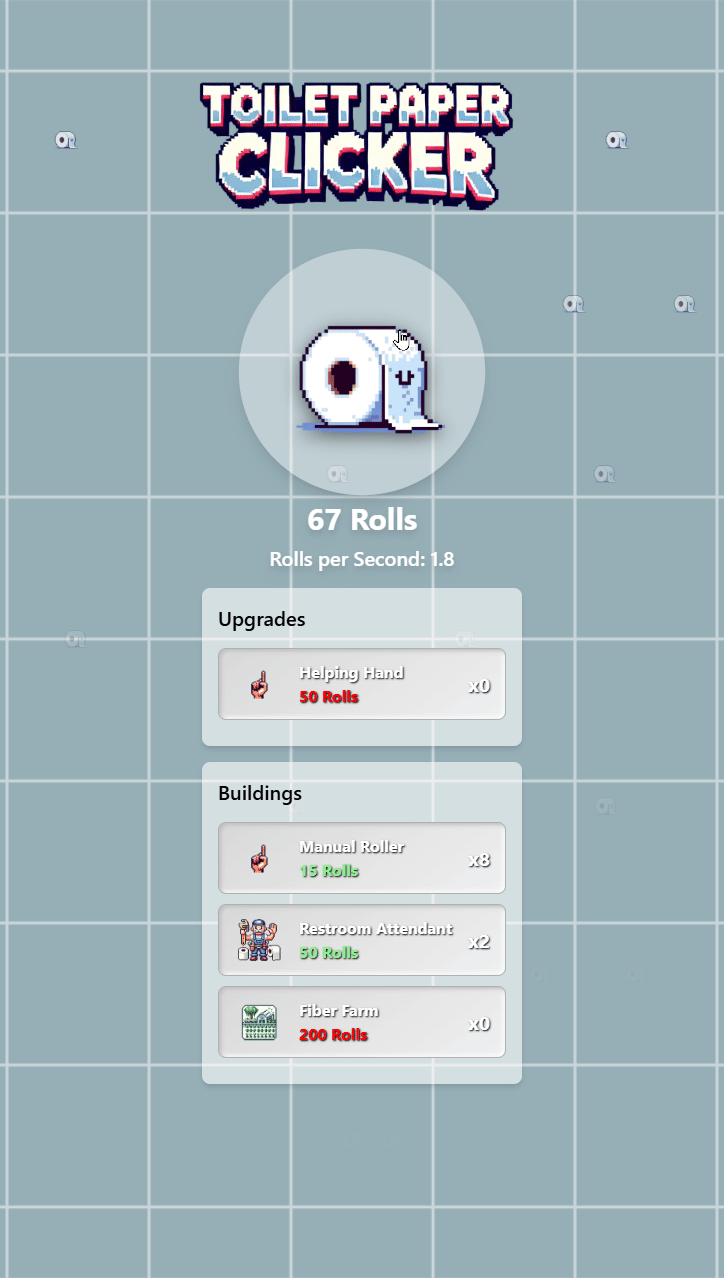Lately, I’ve been experimenting with a custom GPT to help streamline my blog-writing process. Basically, I fed it a bunch of examples of my writing style and set up a consistent formatting scheme that fits how I like to structure my posts. I tend to start with bullet points, listing out quick ideas or processes, and my GPT takes those rough notes and turns them into polished, well-organized content—while keeping everything in my voice.
How It Works
I often jot down quick points, like:
- The tech I’m working on
- Key steps I’m taking
- Any useful tools or links I want to mention
My GPT then:
- Expands the points into neat, conversational paragraphs
- Stays true to the tone I prefer—friendly, casual, and informal
- Adds headings, lists, and subheadings to make everything easy to read
- Keeps the formatting consistent across my posts
Why I Love It
It’s a huge time-saver! Writing blog posts used to be pretty tedious since I’d often leave things half-finished or with placeholder bullet points. Now, my GPT transforms those into full, fleshed-out posts. It’s also helping me update older entries to match my current formatting style—one of those things I’ve always meant to do but never got around to.
In the future, I’m thinking about feeding it more detailed prompts so it can tackle even more complex posts with minimal input from me. But for now, it’s an awesome way to keep things flowing smoothly on the blog without getting bogged down by the writing process.
This covers how you’ve integrated GPT into your workflow, highlighting both the benefits and process. Let me know if you want to add or tweak anything!




